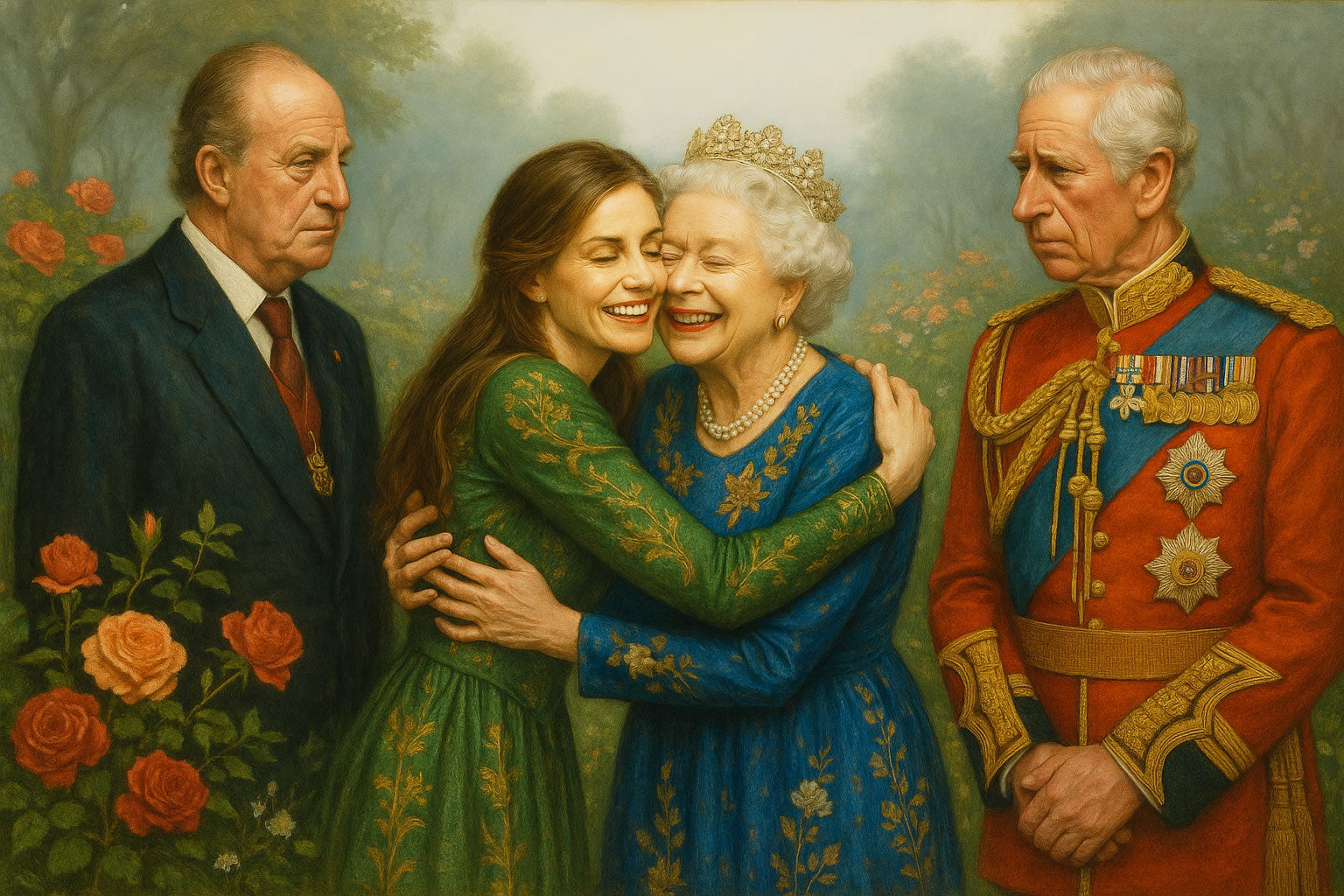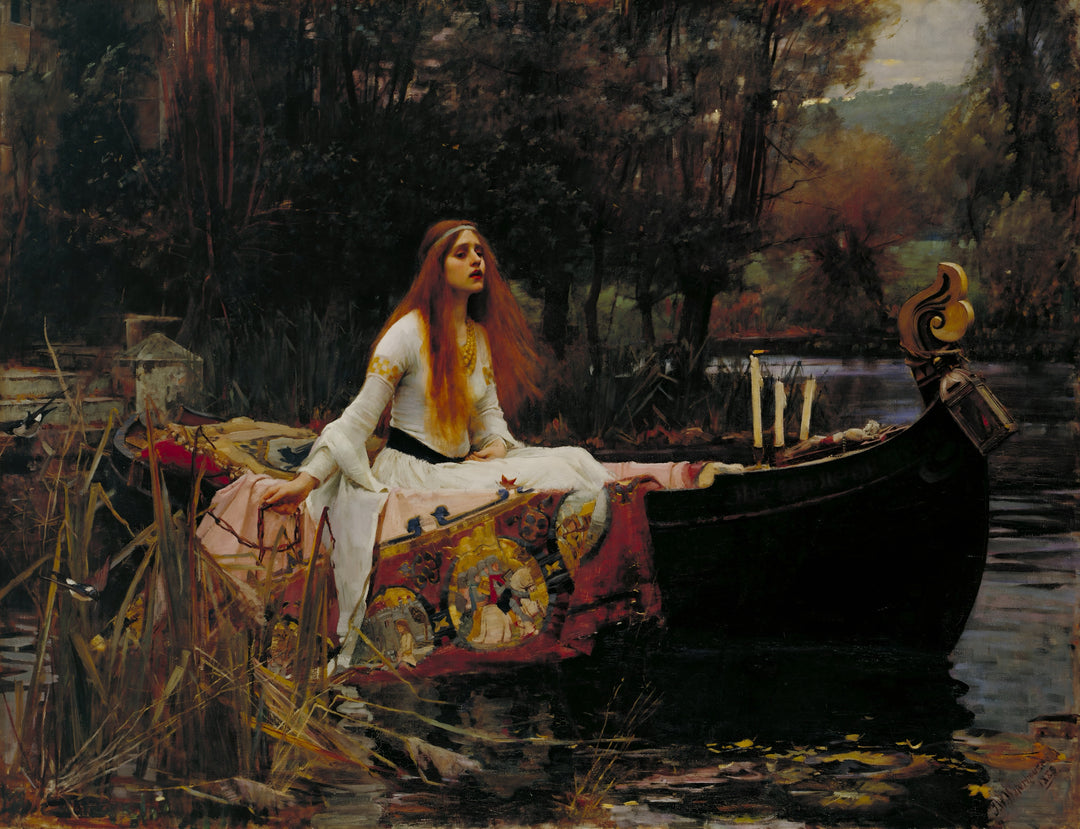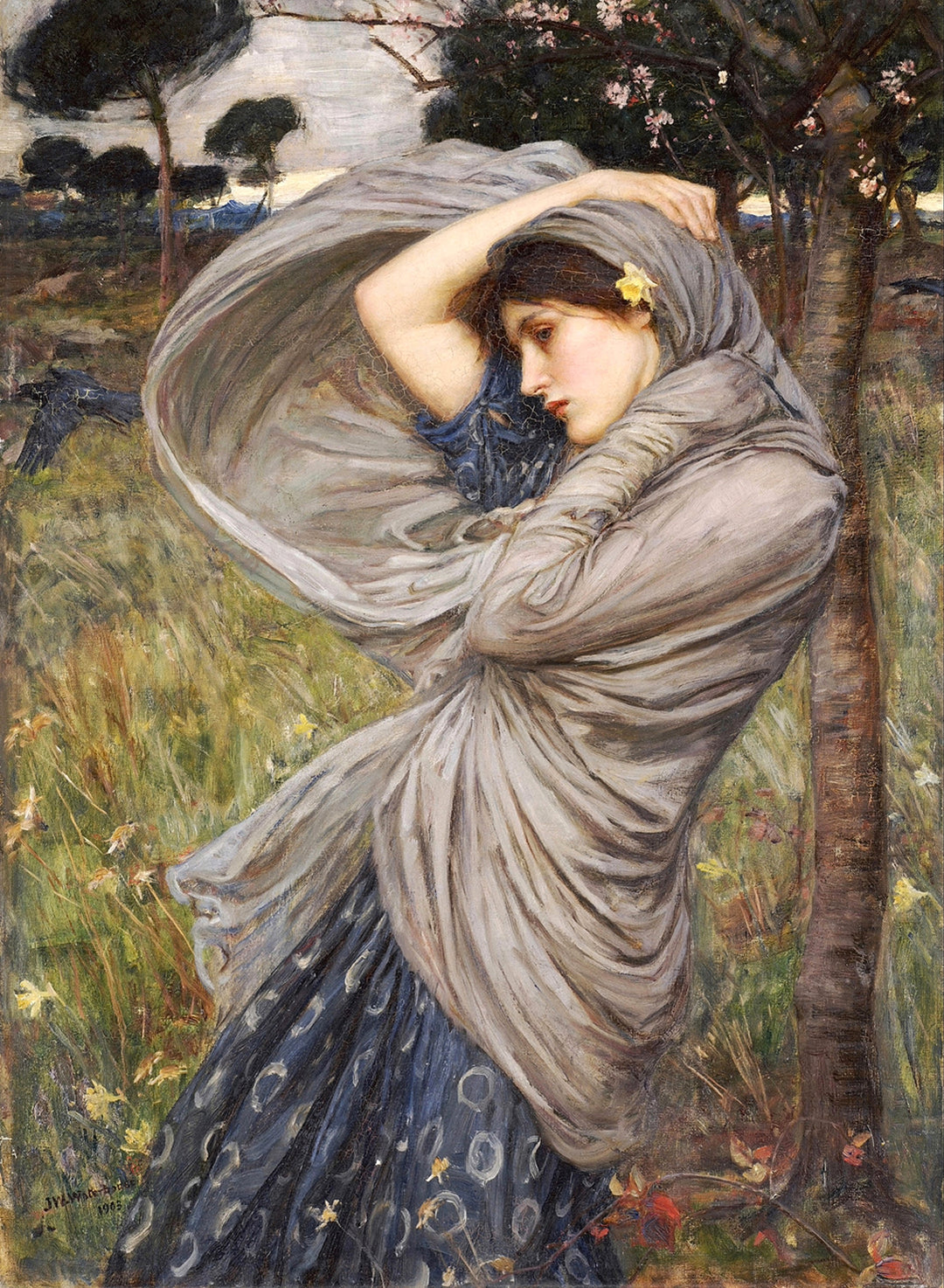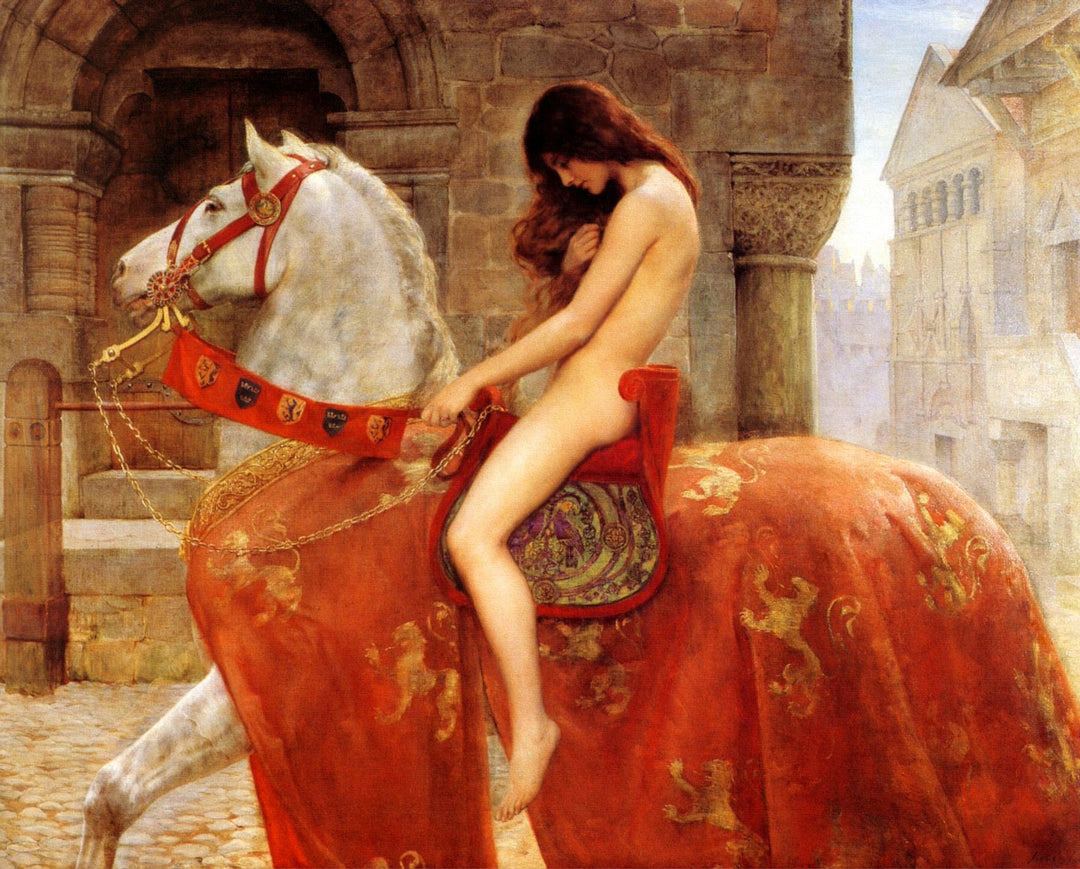
Pre-Raphaelite Brotherhood
The "Pre-Raphaelite Brotherhood" was an artistic movement founded in 1848 in England, which sought an aesthetic renewal in opposition to the rigid academicism of the "Royal Academy of Arts". Inspired by medieval art, the Italian quattrocento, and the symbolic detail of the early Flemish painters, its members rejected the influence of Raphael, whom they considered the beginning of an idealized decline in painting. This brotherhood proposed a return to meticulous precision, chromatic intensity, and themes imbued with spirituality, morality, and literature.
Among its most influential representatives are Dante Gabriel Rossetti, William Holman Hunt, John William Waterhouse, and John Collier, who contributed to consolidating an aesthetic that fused formal beauty with narrative depth. Waterhouse stood out for his dreamlike treatment of myth and poetry, as seen in "The Lady of Shalott" and "Boreas" (whose tone evokes Monet and his masterpiece "Woman with a Parasol. Madame Monet and Her Son"), where the female figures appear surrounded by a melancholic and symbolic aura. Collier, although linked to the movement at a later stage, captured the Pre-Raphaelite essence in works such as "Lady Godiva", merging sensuality, ethics, and historical narrative with technical mastery.
The Pre-Raphaelite legacy extended to European Symbolism, decorative modernism, and Art Nouveau, influencing movements that valued the ornamental, the mystical, and the introspective. Although they began as a critique of academicism, they succeeded in generating a new school of visual thought that privileged contained emotion and pictorial narrative.


